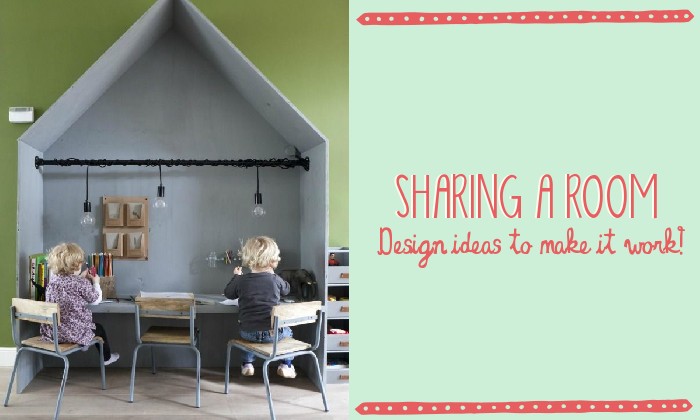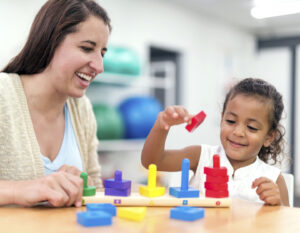

Hong Kong homes are notoriously small, so how do you make it work when you’ve got two or more kids?
When expecting your second (or third or …) child, you might realise that you just don’t have enough space to give everyone their own bedroom. Some families choose to let their children share a bedroom so they can use the other as a spare or playroom. Or, you may be moving houses and having to downsize. Well, the good news is that this happens to a lot of families in Hong Kong, so we have some tips and tricks to make sharing bedrooms between siblings work!
If two children (or more!) have to share a bedroom, you might have concerns about them sharing the space. You might have special worries if one of your little ones is a newborn baby and the other child a toddler. You might choose to have the baby in your bedroom for a while, as it might be better to start them sharing the room when the baby sleeps through the night. When the prospect is coming up the question is: ‘how do you make the best choices for the shared room?’ Often you would start thinking about the crib or cot for the baby but you might also want to make sure that you give your other child enough space to play or study.
Nowadays, there are more and more affordable and stylish options for shared rooms. With these four tips and tricks you will be able to create a functional and even stylish room for both children. And in case you are worried how the children will sleep together, you’ll find some sleeping tips too. Once your children are used to sleeping together, they might even end up not wanting to sleep alone anymore!


1. Think first about the bedding arrangement
When arranging the beds, you are, of course, bound to the shape and size of the room. It may be useful to put some thought to the layout before you start decorating, as this may make a difference in how the children experience sharing their room. You might try to use the bedding arrangement to create as much personal space as possible. Especially if the second child is a bit older he or she might value a bit of personal space.
For the bedding arrangement, there are several options:
- Side-by-side arrangement. With positioning the beds symmetrically, the room gets divided ‘fairly’. This layout also has the advantage that it is visually calming. As the space probably will get quite filled up this might be a reason to choose this particular layout.
- Against opposite walls. This arrangement has the advantage that you can create your children’s ‘own’ spaces by dividing the rooms in half. It would even be possible to create different colour schemes for both sides of the rooms.
- Placing the beds next to each other – in length – with for example the headboards touching against the wall creates much more space in the rest of the bedroom.
- At a 90-degree angle. If the room is small, this might be the only possible layout. With this placement you can still give each child their own corner.
- On top of each other (bunk beds). Using bunk beds has the great advantage that it saves a lot of space in the room, which then can be used for placing a desk, storage or playing area. An extra advantage is that children often find it fun to share bunk beds. This arrangement of course only works out when your youngest is a bit older. Then giving your eldest the top bunk makes the most sense, as it is usually recommended to not put your children in a bunk bed until they are 5 or 6 years old.
The beds pictured are from Leander, available at Mothercare for $13,600.


2. Design ideas when baby sharing with toddler
In the (special) case that you have your baby sharing a room with a toddler make sure that you create ample space for your toddler to play, read and store his or her toys. This might encourage your toddler to feel good about sharing a room with his or her younger brother or sister. The use of a toddler bed that is shorter than a single bed gives you extra space that can be used for storing or playing. Remember a baby doesn’t need much space – if needed changing the baby can be done on a special changing platform that can be attached on top of the bed or even on the floor. Shelves on the wall can create a lot of extra space too – to store baby clothes, toddler books, and more. Be creative!
The (extendable) toddler bed pictured is called ‘Minnen’, available at Ikea for $1,250


3. Which colour palette to pick for shared rooms
If the shared bedroom will be for a boy and girl you might fret about which colour(s) to pick. A neutral colour works well for both a boy and a girl. It seems a trend anyway that nurseries are not given the ‘standard’ blue and pink colors anymore. Anything goes nowadays, really. Gorgeous colors that work for both girls and boys are muted blues and greys. You can also think of yellow, red or maybe you would like to create a beautiful, serene white bedroom. The gorgeous bedroom in the picture above is for twin boys, but could work just as well for two girls or a girl and a boy.
The Grey Paint in the image above is from Benjamin Moore and is called ‘Comet’. The white paint is from Benjamin Moore as well and is called ‘Vapor’


4. Thinking-out-of-the-box idea: physically divide the room
Depending on your owning or renting situation you might decide to put a room divider in the room in order to create two separate rooms for your children. This could be a curtain or even a pocket door. This way your children can share their room if convenient, for instance while playing and you can give them their own space when needed, which can be good for sleeping. In this room, this family chose to divide a shared bedroom with a pocket door. For extra storage, each bed has convenient storage compartments, which can be used for storing toys, and/or holding blankets or sheets.
5. And last – but not least! – How to optimise sleeping when the kids sleep together
After having decorated the bedroom, the most important question is: how do I manage my baby and toddler or younger and older sibling sleeping together? What if one wakes up the other? Probably the best tip is to hold on to individual sleep schedules. If your baby goes to sleep earlier, use the time to spend with your toddler and put him or her to bed later. When it comes to taking naps in the afternoon, sleeping together can be a bit more challenging. If needed, you can be a bit creative, for instance let the baby nap in your room (in a travel cot for instance) if napping together doesn’t work out for a while. You might use this ‘trick’ as well if your baby is waking up at night. And remember, sleeping problems are always temporary – thinking of it as ‘a phase’ might help you to feel better about less sleep too!
Find more tips on sleeping together when sharing bedrooms here!
 View All
View All











 View All
View All





 View All
View All


 View All
View All










